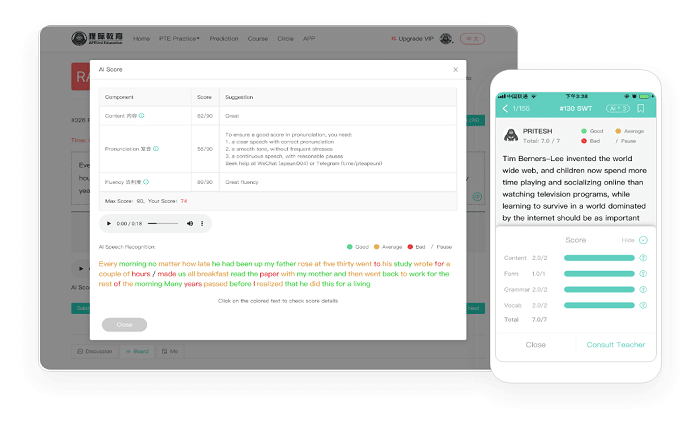
In the realm of data analysis and forecasting, the Apeuni Prediction File has emerged as a pivotal tool for professionals and enthusiasts alike. Whether you’re delving into financial markets, sports analytics, or any field requiring precise predictions, understanding the Apeuni Prediction File can significantly enhance your forecasting accuracy. This blog post explores the intricacies of the Apeuni Prediction File, its applications, benefits, and best practices to help you harness its full potential.
What is the Apeuni Prediction File?
The Apeuni Prediction File is a specialized data format designed to store and manage prediction models and their outcomes. It serves as a repository for various predictive algorithms, historical data sets, and the resulting forecasts. By organizing this information systematically, the Apeuni Prediction File allows users to streamline their prediction processes, ensuring consistency and reliability in their analyses. This file format is widely adopted across different industries for its versatility and ease of integration with other data management systems.
Origins and Development of the Apeuni Prediction File
The Apeuni Prediction File was developed to address the growing need for a standardized method of storing prediction data. Originating from the collaboration between data scientists and software developers, the Apeuni Prediction File was crafted to bridge the gap between complex predictive models and user-friendly data storage solutions. Over time, it has evolved to incorporate advanced features such as compatibility with machine learning frameworks and support for large-scale data processing, making the Apeuni Prediction File a cornerstone in modern predictive analytics.
Key Features of the Apeuni Prediction File
The apeuni boasts a range of features that set it apart from other prediction data formats. Its structured layout allows for easy navigation and retrieval of prediction models and results. Additionally, the Apeuni Prediction File supports various data types, including numerical, categorical, and textual data, making it adaptable to different prediction scenarios. Security features, such as encryption and access controls, ensure that sensitive prediction data within the Apeuni Prediction File remains protected. Furthermore, its compatibility with popular data analysis tools enhances its functionality and usability.
How to Create an Apeuni Prediction File
Creating an Apeuni Prediction File involves several steps to ensure that your prediction data is accurately captured and organized. First, gather all relevant data sets and predictive models that you intend to include. Next, use specialized software or scripts to format this information according to the Apeuni Prediction File specifications. This process typically involves defining data schemas, setting up metadata, and ensuring data integrity. Once formatted, the Apeuni Prediction File can be saved and easily integrated into your existing data analysis workflows, facilitating seamless prediction management.
Applications of the Apeuni Prediction File
The Apeuni Prediction File is versatile and finds applications across various sectors. In finance, it is used to predict stock market trends and investment outcomes. In sports, analysts utilize the Apeuni Prediction File to forecast game results and player performances. Additionally, businesses leverage it for demand forecasting, customer behavior analysis, and risk assessment. The adaptability of the Apeuni Prediction File makes it an invaluable tool for any domain that relies on accurate predictions to inform decision-making and strategy development.
Benefits of Using the Apeuni Prediction File
Utilizing the Apeuni Prediction File offers numerous advantages. It enhances the organization and accessibility of prediction data, allowing for quicker and more efficient analyses. The standardized format of the Apeuni Prediction File ensures compatibility across different platforms and tools, reducing the time spent on data conversion and integration. Additionally, the Apeuni Prediction File promotes consistency in prediction methodologies, which is crucial for maintaining the reliability of forecast results. By adopting the Apeuni Prediction File, users can improve the accuracy and efficiency of their predictive endeavors.
Best Practices for Managing the Apeuni Prediction File
To maximize the effectiveness of the Apeuni Prediction File, it’s essential to follow best practices in its management. Regularly updating the prediction models and data sets within the Apeuni Prediction File ensures that your forecasts remain relevant and accurate. Implementing robust version control helps track changes and maintain the integrity of your prediction data. Additionally, securing the Apeuni Prediction File through encryption and access controls protects sensitive information from unauthorized access. Proper documentation and metadata management further enhance the usability and maintainability of the Apeuni Prediction File.
Common Challenges with the Apeuni Prediction File
While the Apeuni Prediction File offers numerous benefits, users may encounter certain challenges. One common issue is ensuring data compatibility, especially when integrating the Apeuni Prediction File with diverse predictive models and tools. Another challenge is managing large volumes of data, which can strain system resources and impact performance. Additionally, maintaining the security and integrity of the Apeuni Prediction File requires ongoing vigilance and robust security measures. Addressing these challenges involves adopting efficient data management practices and leveraging advanced technologies to optimize the use of the Apeuni Prediction File.
Tools and Software Supporting the Apeuni Prediction File
Several tools and software platforms support the creation, management, and analysis of the Apeuni Prediction File. Data analysis software like Python’s Pandas library and R offer functionalities to handle and manipulate Apeuni Prediction Files effectively. Additionally, specialized prediction management systems provide user-friendly interfaces for interacting with the Apeuni Prediction File, facilitating tasks such as model training, data visualization, and result interpretation. Integration with machine learning frameworks like TensorFlow and scikit-learn further extends the capabilities of the Apeuni Prediction File, enabling more sophisticated and accurate predictions.
Future Trends for the Apeuni Prediction File
The future of the Apeuni Prediction File looks promising, with ongoing advancements aimed at enhancing its functionality and applicability. Emerging trends include increased integration with artificial intelligence and machine learning technologies, which will enable more dynamic and adaptive prediction models within the Apeuni Prediction File. Additionally, advancements in data security will further protect sensitive prediction data, making the Apeuni Prediction File more reliable for enterprise use. As data volumes continue to grow, the Apeuni Prediction File is expected to evolve to handle larger and more complex data sets, solidifying its role in the future of predictive analytics.
Conclusion
The Apeuni Prediction File stands as a vital tool in the landscape of predictive analytics, offering a structured and efficient means of managing prediction data and models. Its versatility and robust features make it suitable for a wide range of applications, from finance to sports to business intelligence. By adhering to best practices and leveraging supportive tools, users can harness the full potential of the Apeuni Prediction File, enhancing the accuracy and reliability of their forecasts. As the field of data analysis continues to advance, the Apeuni Prediction File is poised to remain an essential component in the pursuit of informed and strategic decision-making.
FAQs
1. What is an Apeuni Prediction File used for?
The Apeuni Prediction File is used to store and manage prediction models, historical data sets, and forecast outcomes, facilitating organized and efficient predictive analytics across various industries.
2. How do I create an Apeuni Prediction File?
Creating an Apeuni Prediction File involves gathering relevant data sets and predictive models, formatting them according to the file’s specifications using specialized software or scripts, and ensuring data integrity before integration into your analysis workflow.
3. Which industries benefit most from the Apeuni Prediction File?
Industries such as finance, sports analytics, business intelligence, and any field requiring accurate forecasting significantly benefit from the Apeuni Prediction File due to its versatility and structured data management capabilities.
4. Are there any tools that support the Apeuni Prediction File?
Yes, various tools and software platforms like Python’s Pandas, R, TensorFlow, and scikit-learn support the creation, management, and analysis of the Apeuni Prediction File, enhancing its functionality and ease of use.
5. What are the common challenges when using the Apeuni Prediction File?
Common challenges include ensuring data compatibility with different models and tools, managing large data volumes, and maintaining the security and integrity of the Apeuni Prediction File. Adopting efficient data management practices can help overcome these issues.




